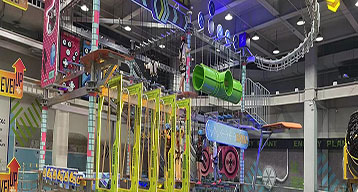2025.03.05
Posted By: Peter
As people's demand for diversified sports experience increases, rock climbing walls have become a new choice for public leisure, entertainment, and exercise and fitness.
The climbing wall is made of composite materials and is an artificial wall used for rock climbing. It simulates the real rock wall environment and provides people with a safe, controllable and convenient climbing space.
Flat Wall: the most common type, easy to use and suitable for beginners.
Inclined Wall: Increase the inclination angle of the wall to challenge the climber's strength and skills.
Crack Wall: simulates a crack in a rock wall, requiring special climbing skills.
Rock plate: usually made of wood, fiberglass or other composite materials, with rock points of various shapes and sizes on the surface, simulating the concave and convex shapes of natural rocks, providing grip and footholds for climbers.
Steel frame: generally made of metal materials, such as steel, to provide support for the rock plate, ensure the overall stability and safety of the climbing wall, and be able to withstand the weight of the climber and the various forces generated during climbing.
Protection system: including equipment such as safety belts, ropes, quick draws, safety buckles, and ground protection facilities such as cushions to ensure the safety of climbers during climbing and prevent injuries due to accidental falls.
Fitness and entertainment: Providing a safe and fun rock climbing experience so people can exercise.
Overcoming the fear of rock climbing: A climbing wall may be the best way to overcome a fear of climbing. Climbers can attempt to climb at a comfortable pace, knowing that a safe and slow descender will immediately add weight and ensure a safe landing.
As an emerging sports facility, climbing walls provide urban residents with a safe, convenient and interesting climbing experience. They have a good development trend in the future and are worth looking forward to.
